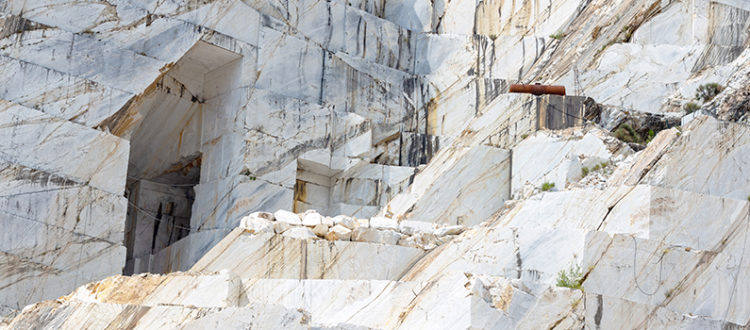Where Does Marble Come From?
Where Does Marble Come From?
Marble is a stone material that stands out above the rest — and has for centuries. Landmarks like the Taj Mahal, Washington Monument, Athens Parthenon, and the Carrara Cathedral are all marble-clad buildings, and the materials’ use won’t be going out of style any time soon.
Stone is considered an eco-friendly material, but it’s not because it’s quickly replenished in nature. In fact, the most famous marbles were likely from 200 million years ago at the earliest, and 60 million years ago at the latest. It’s instead seen as an eco-friendly option because it lasts so long — clearly — and doesn’t need to be replaced. Wondering where this highly sought-after natural stone comes from? Let’s find out.
What Is Marble?
Marble is a metamorphic rock, which places it into a family of stones created by undergoing change, or metamorphosis. This natural stone is created when limestone (or less commonly, dolomite) is subjected to extreme heat and pressure near sites of igneous granite. This metamorphism causes recrystallization of the carbon-based minerals in the rock, with the fossilized minerals in limestone plus its original carbonate minerals turning into calcite. Fine marble receives less heat, while more coarse marble is closer to the hot igneous rock. This transfer of heat and energy results in marble made of interlocking carbonate crystal mosaic.
Igneous granite and sites of marble formation happen along convergent plate boundaries, which occur across the globe. You’ll find convergent plate margins along the western coasts of the Americans, throughout the Pacific’s Ring of Fire, following the border of Indonesia, along the northern border of India, and across Southern Europe. These marble sinks can be hundreds of feet thick and cover large geographical regions.
Different Types of Marble
Marble itself is always made of the same material, but its variants come from the impurities inside of it. Of course, they can’t really be looked at as “impurities.” They’re simply other minerals found in the rock at the time of crystallization. The color swirls you see, or marbling, are made up of different minerals that were found alongside the limestone. These minerals decide the resulting marble’s color and patterns, as the minerals react differently to heat and pressure than limestone does. Pure white marble is created when pure limestone is pressurized and heated. Clay, silt, sand, chert, serpentine, and iron oxides are commonly present though, giving marble its tan, yellow, green, and red appearances, respectively.
Common Sources of Marble
Marble is most commonly found in Italy, China, India, and Spain. These four countries quarry about half of the world’s marble. Turkey, Greece, and the United States also have a high prevalence of marble quarries, as well as Belgium, France, and the United Kingdom. Within the United States, you’ll find the highest amounts of marble in Georgia, Alabama, Colorado, Montana, Tennessee, Texas, and Vermont.
The Mining of Marble
As a natural stone, marble is both incredibly strong and very delicate. It does not split easily and must be mined carefully in order to get sheets of similar size. Explosives can’t be used, because the rock will shatter. Instead, minors outline blocks of marble and drive wedges into grooves’ openings. They’ll separate a block from its surrounding marble in the quarry, and use a saw to define its shape and size. Slabs will then be transported across the globe, typically packaged in wood containers often filled with substances like straw for protection.
Choose the Best Marble From Impression
At Impression, we quarry our marble from France and Italy to ensure the highest quality and the widest selection of colors and patterns possible. No matter your project, our experts will match you with the ideal marble type for your house and get you started on a custom home feature your family will love for generations. Get in touch today to see how we can help transform your home!
















